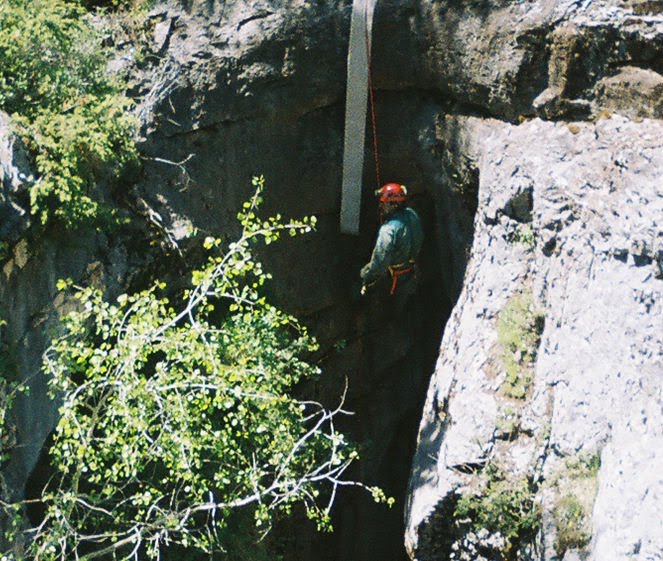For the sake of discussion, we are talking about free climbing. Free solo climbing will not be discussed at this time.
Climbing is usually done with at least two people and sometimes more. When climbing, one person is climbing and the other belays the climber. By belay, I mean protects them from a fall. This is done with a rope. The rope is either anchored at the top of the face or drawn up the climb with a lead climber.
When anchored at the top (top roping), the rope is dropped down on both sides of the anchor, one end tied to the climber's harness and the other end controlled by the belayer. As the climber ascends, the belayer pulls up the slack in the rope through a belay device. If the climber were to fall the belayer can stop the release of rope by pulling on the rope through the belay device, thus stopping the climber's fall.
In the case of lead climbing, the rope is attached to the climber and controlled by the belayer. As the climber ascends a pitch, they attach a quickdraw (2 carbiners connected together with a short length of webbing) to an anchor on the wall and then run the rope through the other end of the quickdraw. As the climber ascends, the belayer lets out more slack in the rope. The climber continues to ascend, attach quickdraws and loop the rope through them. If the climber were to fall, the belayer would, once again, control the fall with the belay device. The climber would only fall twice the distance they are above the last anchor.
In either case, the belayer could belay them all the way down if needed. Some climbs are too long and this operation has to be done in several pitches up the face.
Equipment needed.
Harness
Helmet
Carabiners
Quickdraws
Chalk and bag
Climbing shoes
Rope
Belay devices
Anchors (either removable or permanent)
Comfortable clothing
This is just a basic list and can be improved upon over time.
Monday, December 14, 2009
Subscribe to:
Post Comments (Atom)


No comments:
Post a Comment